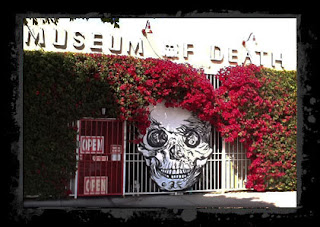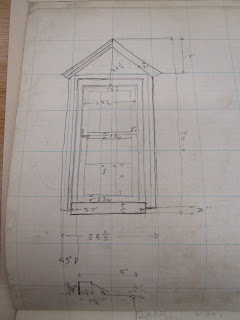TIME AT A GLANCE
A timeline is the graphic representation of the passage of time as a line. It shows chronologically how events happened, perhaps making it an easy way to comprehend how one thing led to another.For my assignment this week, I created a timeline for a property in Alexandria known as the Murray-Dick-Fawcett house -- a name chosen by the Office of Historic Alexandria (OHA) based on three former owners. It has had other names over the years. The timeline title is 517 Prince Street, Alexandria, Va. It is a public timeline. The URL link is
https://www.timetoast.com/timelines/the-house-on-prince-street
(NOTE: This is different than the Blackboard link I sent! I created the timeline, then changed the title of it while editing to make it more specific; apparently, you can't do that.)
The city bought the property in 2017
with the intent of turning it into a museum. (Here is a photo I took from the garden area that shows how the 1772 part of the house was expanded in 1784.) That museum date is indefinite because the resident was granted life tenancy. I've been volunteer working part time on the house history since late last year, after taking Dr. Dluger's museum practice class.
I chose the timetoast tool after looking on YouTube at videos of several timeline tools. This one said about 30 to 40 items work best in a timeline, partially why I chose it. Tiki-toki looks easy to use, and there are more choices on graphics and looks, but the results seem cluttered.
You can see from my timeline that the Brown family may have owned the property for 184 years, but there is not a lot included about them. They were not rich or famous. Some of them lived in the house their entire lives, but a tool other than a timeline would show their stories better.
This timeline uses some of the primary source documentation I have compiled. Since some is from deeds, wills and official documents, and not everything is online, I used a few important to telling this story on the timeline.It is much easier to use this online timeline than the way I have been doing it -- written out in Word. However, the online tool itself seemed to get stuck sometimes. Twice my work got erased. I was surprised that uploads were easy from my own computer, after resizing images.
Tracing the history of this house in a timeline works well. In museums visitors like a quick view of significant events or facts. Often an exhibition has a timeline near the front as an introduction to the topic. If this property opens as a museum, a graphic like that would be useful right inside a door. In fact, this timeline tool on an interactive notebook or other device right inside would work, too.
Fine-tuning is needed if this timeline is to be used for real by the Office of Historic Alexandria. In any case, should I buy a basic timetoast account so I can embed this on my own web page (and take credit or blame)?
This tool also would be good for a timeline of the Loudoun County historic cemeteries such as those used in my final project, or a complete list of county cemeteries.
PROJECT UPDATE
The story map on 20 Loudoun County Historic Cemeteries is being worked on in arcgis online. I am rewriting descriptions in a more standardized way so that the reader is not confused, including the address, when the cemetery was started, by whom, and at least one or two facts about why each is interesting.I may reorganize the photos but don't think a chronological or alphabetical order is the best way to present this project, although that can be changed later. Interspersing landscape shots with tombstones and iconography makes for a more visually appealing story. I am having problems subbing some photos and thumbnails, but will stumble along!
https://www.arcgis.com/apps/MapTour/index.html?appid=b8dff999034e45de8cb54a39d62faaea
It is shared. Use https://arcg.is/KbuTa as the link to view it.





